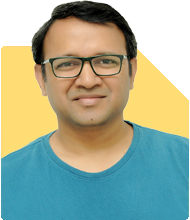Is my SIP portfolio good enough? A 30-year-old seeks advice.
Ramalingam Kalirajan |9848 Answers |Ask -Follow
Mutual Funds, Financial Planning Expert - Answered on Dec 28, 2024
He has an MBA in finance from the University of Madras and is a certified financial planner.
He is the director and chief financial planner at Holistic Investment, a Chennai-based firm that offers financial planning and wealth management advice.... more

Hi Team, I am 30 and have below SIPs. Please review them and let me know if i have to make any changes. Hdfc large & Mid cap fund - 5000 Motilal Oswal Mid cap fund - 5000 Kotak infrastructure and eco fund - 2000 PGIM India Mid Cap Opportunities Fund- 5000 SBI Contra -1500 Motila Oswal business cycle fund-3000 Focus is to continue SIP for longterm
Strengths of Your Current Portfolio
Diverse Investment Strategy: Your funds cover multiple segments like large-cap, mid-cap, and thematic investments.
Long-Term Focus: A consistent SIP approach aligns with compounding benefits and market cycles.
Mid-Cap Exposure: Allocating significant SIPs to mid-cap funds positions your portfolio for growth.
Inclusion of Thematic Funds: Thematic funds add sectoral focus, offering opportunities in specific growth areas.
Areas for Improvement
Concentration in Mid-Cap Funds: A high allocation to mid-cap funds can increase volatility. Diversification is key.
Overlapping Thematic Focus: Funds with sectoral or cyclical focus may overlap in strategy.
Balance Between Growth and Stability: Adding more stability-focused funds can protect the portfolio in downturns.
Fund-Specific Observations
Large and Mid-Cap Fund
This fund balances growth and stability.
Retain this allocation for consistent returns and risk management.
Mid-Cap Funds
Significant allocation to mid-cap funds is growth-oriented.
Review performance and overlap to avoid redundancy.
Consider reallocating some amount to flexi-cap funds for diversification.
Thematic Infrastructure Fund
Sector-focused funds can be volatile and dependent on market cycles.
Limit thematic exposure to 10% of your overall portfolio.
Monitor this fund closely to ensure it aligns with your goals.
Contra and Business Cycle Funds
Both funds are contrarian and cyclical in nature.
Overlapping strategies may lead to concentration risk.
Retain one fund and reallocate the other to a balanced or flexi-cap fund.
Recommendations for Portfolio Optimisation
Enhance Diversification
Add a balanced allocation to large-cap or flexi-cap funds for stability.
Diversification reduces risk and enhances long-term returns.
Monitor and Evaluate Performance
Regularly review fund performance to ensure alignment with goals.
Replace underperforming funds without hesitation.
Adjust Thematic and Sectoral Exposure
Limit thematic funds to a smaller portion of your portfolio.
Sector-focused funds are cyclical and require active monitoring.
Tax-Efficiency
Long-term equity fund gains above Rs. 1.25 lakh attract 12.5% tax.
Short-term gains attract a 20% tax.
Consider tax efficiency while planning redemptions.
Importance of Regular Funds
Direct funds lack personalised guidance and portfolio tracking.
Investing through a Certified Financial Planner ensures regular reviews and professional advice.
Regular funds offer value-added services and align with long-term goals.
Final Insights
Your portfolio is well-structured for long-term growth but needs refinement.
Reduce concentration in mid-cap and thematic funds for better risk management.
Increase exposure to diversified and balanced funds for stability.
Seek professional guidance to optimise performance and adapt to market trends.
Your disciplined SIP approach will reward you over time. Stay consistent and review periodically.
Best Regards,
K. Ramalingam, MBA, CFP,
Chief Financial Planner,
www.holisticinvestment.in
https://www.youtube.com/@HolisticInvestment
You may like to see similar questions and answers below
Ramalingam Kalirajan |9848 Answers |Ask -Follow
Mutual Funds, Financial Planning Expert - Answered on Apr 08, 2024
Vivek Lala | Answer |Ask -Follow
Tax, MF Expert - Answered on May 24, 2023
Ramalingam Kalirajan |9848 Answers |Ask -Follow
Mutual Funds, Financial Planning Expert - Answered on May 14, 2024
Ramalingam Kalirajan |9848 Answers |Ask -Follow
Mutual Funds, Financial Planning Expert - Answered on May 06, 2024
Ramalingam Kalirajan |9848 Answers |Ask -Follow
Mutual Funds, Financial Planning Expert - Answered on May 14, 2024
Nayagam P P |9354 Answers |Ask -Follow
Career Counsellor - Answered on Jul 24, 2025
Nayagam P P |9354 Answers |Ask -Follow
Career Counsellor - Answered on Jul 24, 2025
Patrick Dsouza |1330 Answers |Ask -Follow
CAT, XAT, CMAT, CET Expert - Answered on Jul 24, 2025
Samraat Jadhav |2391 Answers |Ask -Follow
Stock Market Expert - Answered on Jul 24, 2025
Nayagam P P |9354 Answers |Ask -Follow
Career Counsellor - Answered on Jul 24, 2025
Nayagam P P |9354 Answers |Ask -Follow
Career Counsellor - Answered on Jul 24, 2025
Patrick Dsouza |1330 Answers |Ask -Follow
CAT, XAT, CMAT, CET Expert - Answered on Jul 24, 2025
Nayagam P P |9354 Answers |Ask -Follow
Career Counsellor - Answered on Jul 24, 2025
Ravi Mittal |623 Answers |Ask -Follow
Dating, Relationships Expert - Answered on Jul 24, 2025
Ravi Mittal |623 Answers |Ask -Follow
Dating, Relationships Expert - Answered on Jul 24, 2025

























.jpg)